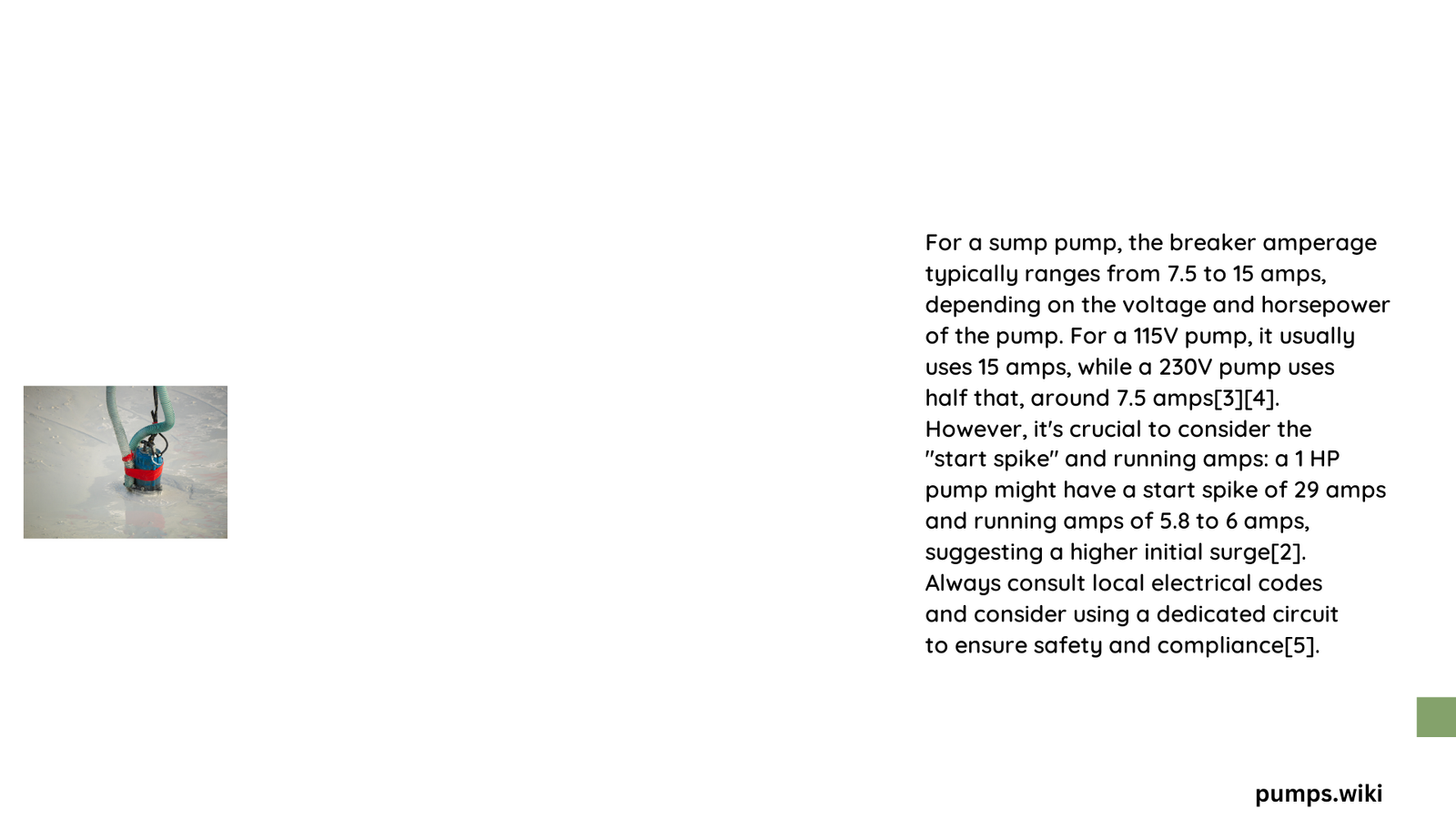Understanding sump pump breaker amperage is crucial for preventing electrical hazards and ensuring optimal pump performance. Homeowners must carefully match their sump pump’s electrical requirements with the appropriate circuit breaker, considering factors like horsepower, voltage, and maximum amp rating to protect both the pump and the electrical system from potential damage or failure.
What Determines Sump Pump Breaker Amperage?
Sump pump breaker amperage depends on several critical factors that homeowners and professionals must carefully evaluate:
Factors Influencing Breaker Selection
- Pump horsepower
- Voltage rating
- Maximum amp draw
- Locked rotor (start-up) current
- Electrical circuit specifications
How to Calculate the Correct Breaker Size?

Calculating the appropriate breaker size requires a systematic approach:
- Identify Pump Specifications
- Check the manufacturer’s nameplate
- Note maximum amp rating
-
Determine voltage (115V or 230V)
-
Apply the 80% Electrical Safety Rule
- Maximum continuous load should not exceed 80% of breaker rating
- Example: A 20A breaker should not draw more than 16 amps continuously
Breaker Amperage Guidelines by Pump Horsepower
| Pump Horsepower | 115V Circuit | 230V Circuit |
|---|---|---|
| 1/2 HP | 20A | 15A |
| 3/4 HP | 20A | 20A |
| 1 HP | 25A | 20A |
| 1.5 HP | 30A | 25A |
| 2 HP | 30A | 25A |
What Are Common Electrical Challenges?
Sump pump electrical systems present unique challenges:
- High Inrush Current: Start-up currents can be 2-3 times the running current
- Voltage Fluctuations: Can impact pump performance
- Circuit Overloading: Risk of breaker tripping or electrical failure
Specific Model Amperage Requirements
Example Pump Specifications
- Gould Water Technology WS0511B (1/2 HP)
- 115V maximum amp rating: 14.5 amps
- Locked rotor amp rating: 31.1 amps
-
Recommended circuit: 20A
-
Zoeller 270 (1 HP)
- 115V model: 15 amps
- 230V model: 7.5 amps
- Recommended circuit: 20A for comfort and surge protection
What Happens with Incorrect Breaker Sizing?
Potential consequences of improper breaker selection include:
- Frequent breaker tripping
- Potential pump motor damage
- Increased risk of electrical fires
- Compromised water removal capabilities
- Reduced pump lifespan
Pro Tips for Sump Pump Electrical Safety
- Always consult manufacturer specifications
- Use a dedicated circuit for sump pumps
- Consider professional electrical inspection
- Upgrade wiring if necessary
- Install surge protection
When to Seek Professional Help?
Consult an electrician if you:
– Are unsure about electrical specifications
– Notice recurring breaker trips
– Plan to install a new sump pump
– Observe unusual pump behavior
– Want a comprehensive electrical system evaluation
Final Recommendations
- Prioritize electrical safety
- Match breaker to pump specifications
- Perform regular maintenance
- Monitor pump performance
References:
1. RPS Water Pumps – Pump Breaker Sizing
2. Electrical Safety Guidelines
3. Sump Pump Installation Standards
